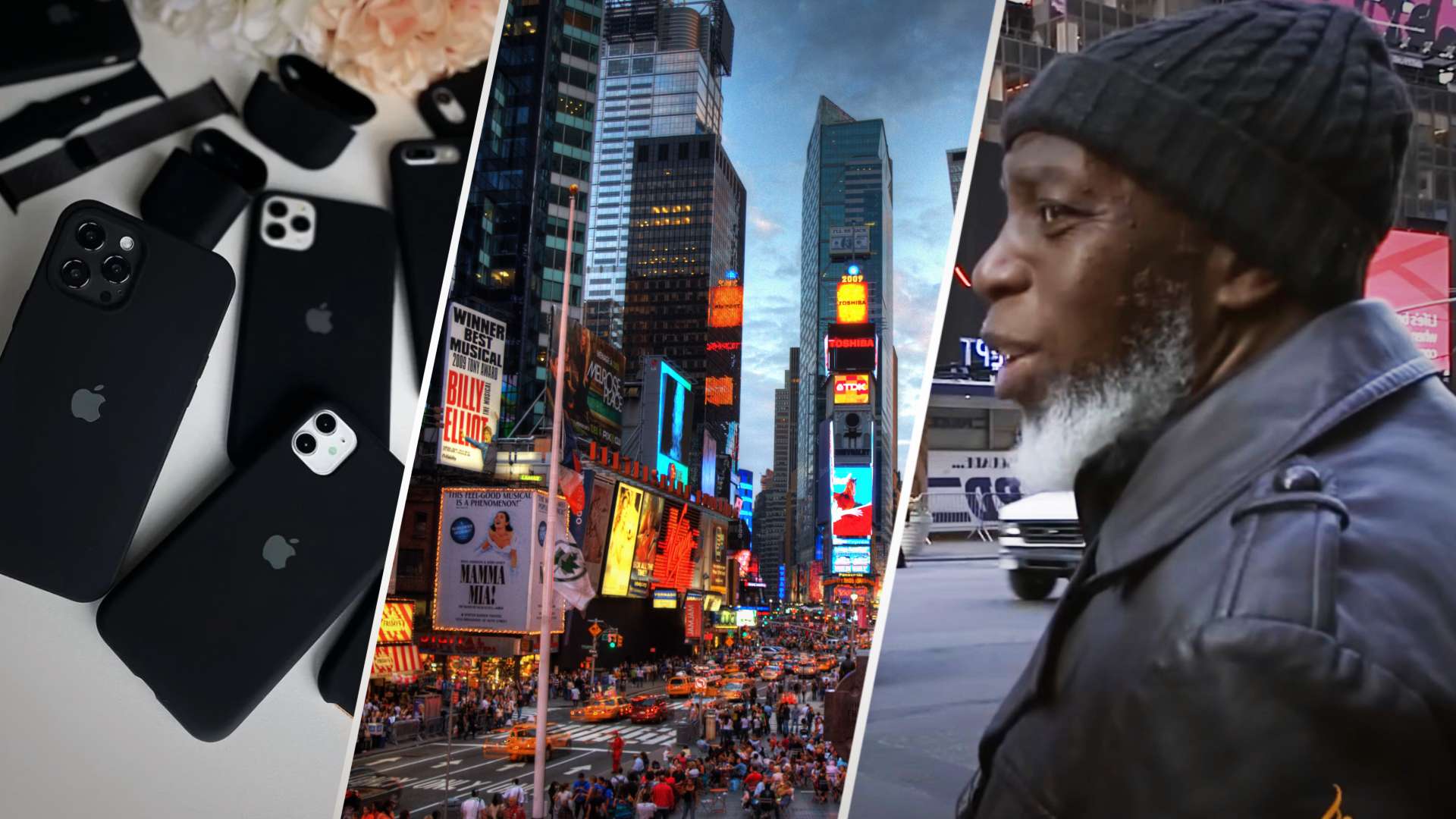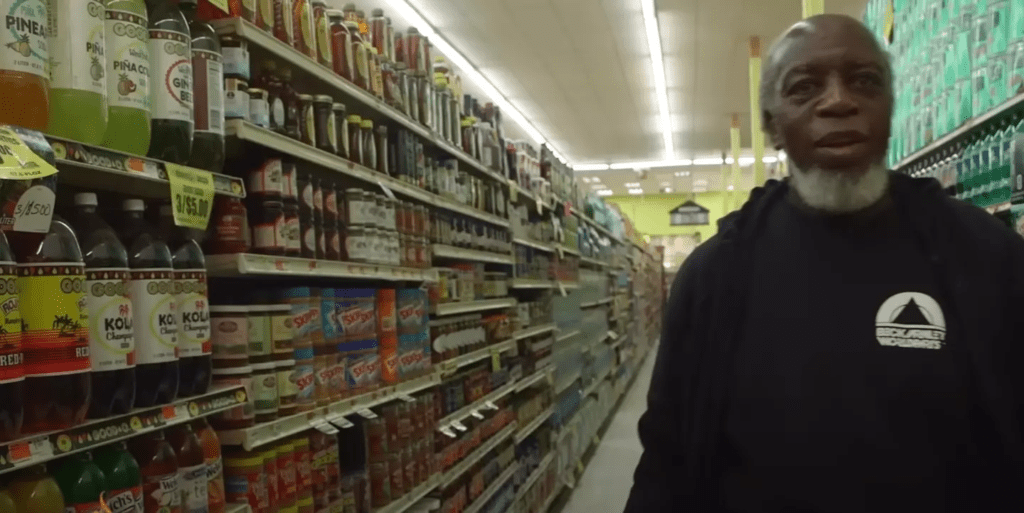Man’s First Reaction to Times Square and iPhones After 44 Years in Prison: A Life Transformed

Imagine stepping out into a world vastly different from the one you left behind, a world where technology has reshaped society. Otis Johnson, after spending 44 years in prison, experienced this first-hand when he finally stepped into Times Square. His reaction to modern-day life, including iPhones, neon billboards, and even the simple act of making a phone call, offers a unique perspective on the rapid advancement of technology.
The Shocking Realities of Freedom
After spending over four decades behind bars, Otis Johnson was released from prison in 2014. The world he had known in 1970 was unrecognizable. His first moments of freedom were jarring—not only because of his past but also because of the overwhelming technological advancements that had transformed everyday life.
From Prison to Times Square: A Journey Into the Future
Otis, who was jailed at the age of 25 for an attempted murder charge, walked into a world that had been completely revolutionized by the digital age. One of the first places he visited was Times Square, a hub of neon lights, billboards, and bustling crowds—an environment he could have never imagined.
“On the windows?! I ain’t never seen anything like this before!” Johnson marveled, as he gazed at the vibrant advertisements plastered on the glass of Times Square’s buildings.

A Digital Revolution Beyond Comprehension
Imagine stepping into the future without any warning. For someone who had been isolated for decades, the sight of people glued to their phones seemed surreal. Johnson, unfamiliar with smartphones, was perplexed by the sight of people walking and talking without speaking to anyone in person.
“I thought, ‘What, everybody became CIA or agents and stuff like that?'”
For Otis, seeing people with wires in their ears, speaking to what appeared to be no one, was completely baffling. He had no knowledge of smartphones, which had become ubiquitous by the time of his release. As he tried to make sense of it all, it wasn’t just the technology that confused him, but also the cultural shift that technology had brought with it.
Social Media Reactions: Public Perspectives on Otis’ First Impressions
In the age of social media, reactions to Otis Johnson’s experiences didn’t just stay confined to news outlets. The public took to platforms like Twitter and Instagram to share their thoughts, and here’s what some people had to say about his journey into the modern world:
Twitter Post 1:
“Imagine being in prison for 44 years and then seeing an iPhone for the first time. #OtisJohnson’s reaction to #TimesSquare is so raw and real. #TechShock #PrisonReentry”
Click to read more about Otis Johnson’s story on Twitter
Instagram Post 1:
“44 years behind bars, and this is the first time Otis Johnson has seen a world of iPhones and neon billboards. His reactions are priceless and truly eye-opening. Makes you appreciate technology in a whole new way. #iPhones #Freedom #TechEvolution #NewWorld”
Check out the post on Instagram
Twitter Post 2:
“The world has changed so much in 44 years. Otis Johnson never saw the internet, smartphones, or self-checkout registers until now. It’s a reminder of how fast technology evolves. #DigitalAge #OtisJohnson #TechVsTime”
Read reactions on Twitter
Instagram Post 2:
“The face of someone who just saw Times Square in 2014 after being in prison since 1970. It’s moments like this that make you think: How far have we really come in such a short time? #OtisJohnson #FreedomFeels #TechnologyRevolution”
See the full post on Instagram
The Changing Landscape of Communication
In 1970, a mobile phone didn’t even exist yet. The most cutting-edge technology was the payphone, which Johnson remembers fondly. However, he was startled to find that the cost of making a phone call had increased dramatically in his absence.
“I remember this when I first got out. I was gonna make a call, then I seen the $1 thing. It was what, 25 cents when I was out?”
This small but telling example showcases just how much prices—and technology—had changed during his time behind bars. To learn more about the history of payphones and how technology changed the way we communicate, check out this informative guide.
A Shift in Communication: From Payphones to iPhones
In the years since the invention of the mobile phone, communication has evolved beyond recognition. iPhones and other smartphones have become essential tools for staying connected. Whether it’s calling, texting, or checking social media, these devices are our lifelines.
For Otis, the transition from payphones to instant digital communication felt like stepping onto another planet. You can read more about how figures like Steve Jobs and the rise of Apple helped shape this communication revolution in this timeline of Apple’s rise.
The World of Work and Technology
As Otis explored the world outside prison, it became clear just how deeply technology had permeated everyday life—not just in entertainment or food, but also in work and communication.
The Rise of Tech Giants
While Johnson had been away, some of the world’s most influential companies had risen to power. Names like Apple, Tesla, and Amazon had reshaped industries and cultures. Figures like Steve Jobs, Elon Musk, and Jeff Bezos became household names, changing the way people live and work.
Otis, however, was completely unaware of these tech titans. He had no idea how technology had changed the way people work, communicate, or even think. To learn more about how figures like Steve Jobs transformed technology, visit this timeline of Apple’s rise.
Modern Life: Overwhelming but Fascinating
It wasn’t just the smartphones and billboards that caught Johnson’s attention. Even the smallest details of everyday life left him in awe.
Supermarkets: A Cornucopia of Choices
Walking through an American supermarket, Otis found himself mesmerized by the sheer amount of choices. One of the most perplexing moments came when he saw peanut butter with jelly inside the same jar.
“Peanut butter and jelly in the same place, in a jar? That was strange.”
The convenience of such products, a typical sight in modern grocery stores, was a far cry from the limited options he had grown accustomed to behind bars.

For a closer look at how the food industry has evolved and the convenience products that have become staples in our homes, explore this article on modern grocery shopping trends.
The Joys and Challenges of Freedom
For Otis, his re-entry into society wasn’t all about the technology. It was also about rediscovering the simple joys of being outside, in the sun, and surrounded by people. After years of confinement, this was something to treasure.
“Being in society is a good feeling, a very good feeling. Being inside the prison, you only can go outside at certain times. So I like being in the sun and also observing people. It’s nice. It’s nice to be free.”
His reflections on freedom and the world he had been absent from for so long serve as a poignant reminder of how precious freedom really is. While technology may change rapidly, the feeling of being free remains timeless.
A Lesson in Appreciation
Otis Johnson’s story is more than just a tale of technological shock and cultural confusion. It’s a story of resilience, adaptation, and the incredible human ability to thrive in the face of drastic change. His perspective on the modern world offers us a valuable lesson in appreciating the simple things we often take for granted.
The next time you check your phone or scroll through a screen, consider what it would be like to experience the world anew, just as Otis did. In a society that’s constantly moving forward, sometimes it’s important to pause and reflect on how far we’ve come—and how much more there is to experience.
Featured Image Credit: YouTube/Al Jazeera






